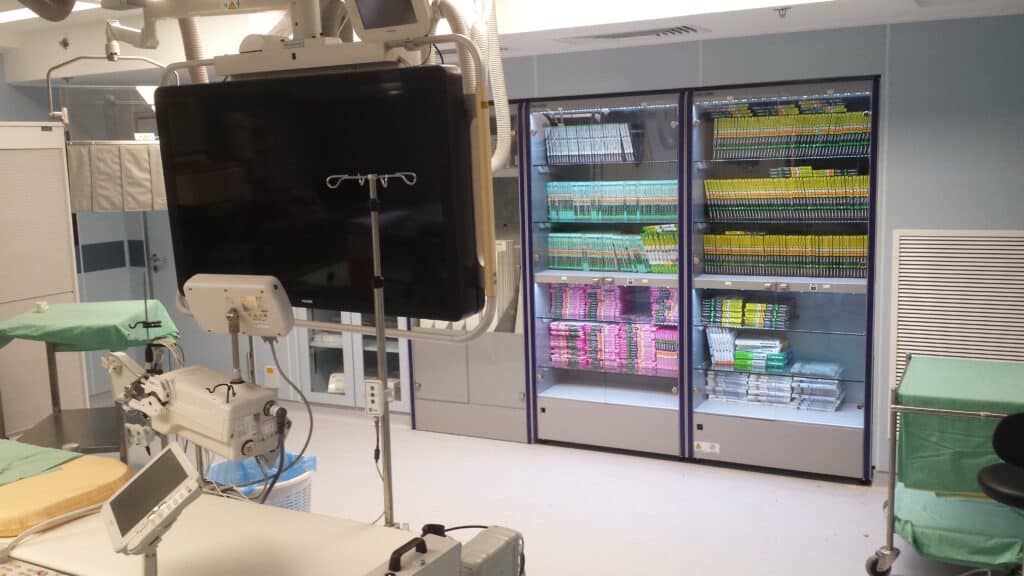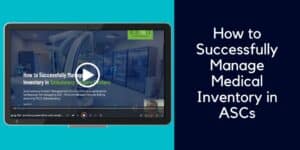What’s inside:
Boosting ASC profits in a competitive and cost-heavy market is the current issue being faced by many ambulatory surgery centers (ASCs)
There are many supply-chain drivers that impact ASC profits and this blog will cover:
- Challenge of implant management
- Reducing implant costs
- Reducing implant waste
- Using data to plan healthcare delivery
A recent article in Becker’s ASC Review outlines the financial challenges that threaten ASC profitability. In this blog we walk through some of these issues and identify a key contributor to inefficient practices – inaccurate data.
Bad data hinders financial management and operational decision-making in ASCs. Let’s look at two of the issues raised in the Becker’s article and focus on the role of data in driving through efficiencies and cost savings.
The Challenge of Implant Management
When describing the financial issues faced by ambulatory care providers relating to implant management, the Becker’s article highlights three main issues:
- Skyrocketing implant costs
- The high price of bill-only items procured in the OR
- The importance of vendor selection
So how can data support these common inventory management challenges?
Reducing Implant Costs
In the Becker’s article, Curtis Mayse, CEO of Steamboat Orthopaedic and Spine Institute, comments:
“On the implant side we’re seeing double digit increased costs… the costs are significantly going much higher and quicker than any reimbursement or payer are keeping up.”
It’s clear that many providers are struggling to manage a combination of increased costs and fixed margins.
BUT – Surgery centers can take steps to reduce implant costs, enabling them to mitigate these cost constraints and find areas of untapped savings and revenue.
We’ll start by looking at steps ASCs can take to manage inventory more efficiently.

Identify Inventory Needs
Many providers are holding far too much stock on site leading to high procurement and storage costs.
Understanding your inventory is the first step to improved stock management, so utilizing inventory management technology can leverage data to help you:
- Gain real-time inventory vision
- Achieve full stock control
- Identify obsolete stock and slow movers
- Assess min/max levels of fast-moving items
Once you have automation in place you can apply a data-driven approach to inventory management and quickly achieve a reduced, balanced inventory.
Shlomo Matityaho, IDENTI CEO, clarifies this point: “In the end, ambulatory providers simply need continuing availability of best-value stock to meet identified levels of need. “
Automated inventory management systems provide reports, metrics and insights that highlight areas of inefficiency and help providers to identify their actual inventory needs.
Switching from a “best guess” approach to a data-driven process transforms procurement, ensuring the right stock is available at the right time, and eliminating unnecessary costs.
Providers typically achieve a 30-40% stock reduction in the first year of using automated technology.
Data Driven Procurement
A problematic area that was highlighted in the article is the need for ASCs to reduce expensive last-minute orders and end their reliance on trunk stock, including physician purchases in OR. Let’s look at how you can do this.
- Improve data capture at the point of use to ensure full and accurate usage data is collected, for non-stock products as well as stock items.
- Use consumption data to drive procurement so that your reordering process follows a demand-led model.
- Tackle Variation: Gain an overview of standardization issues so that you can consolidate like-for-like products and get more negotiating power with providers to bring costs down.
- Operate a clinically integrated supply chain where physicians are involved in value analysis exercises and supply chain decision making.
Using data to drive supply chain decision making, and including clinical staff in procurement decisions supports vendor selection, contract negotiations, and procurement choices. Improving purchasing power can have a significant impact on costs – and data has the power to strengthen ASC bargaining power in order to negotiate better vendor terms. By demonstrating their purchasing power and identifying areas for consolidation, ASCs can secure more favorable pricing.
ASCs looking to reduce inventory costs and wastage need to ensure they have efficient data capture technology in place for monitoring stock, as well as tracking utilization.
When these two data elements are efficiently collected, providers can make smarter decisions that reduce implant costs.
FIND OUT MORE ABOUT IMPLANT AND MEDICAL DEVICE MANAGEMENT
How can you Reduce Waste?
One way to avoid high implant costs is to reduce wastage. This important area wasn’t mentioned in the Becker’s article, but expiry waste is notoriously high in many healthcare facilities, and is a double disaster for cost management as it not only results in wasted stock items but also contributes to unnecessary procurement.
Leveraging automated item tracking technology enables providers to automate expiry management and ensure providers use, and not lose, stock items due to expiry issues.
FIND OUT MORE ABOUT EXPIRY MANAGEMENT
It’s clear that when it comes to implant management in ASC providers, that there’s a lot that can be done to reduced costs and improve processes.
Gaining control of expiry wastage can save millions of dollars a year
Boosting ASC Profit via Commercially Viable Procedures
Another issue raised in the article relating to ASC profitability challenges, is the need to assess case profitability before expanding delivery.
It’s important to remember that healthcare providers are businesses and need to ensure they operate profitably.
In the article, Ms Becerra, Director of Nursing at Crown Point Surgical Suites, commented on the need to check case profitability: “Sometimes the surgeons want to bring those cases to an ASC, because it may be easier, but it may not be cost-effective for the surgery center.”
Data analysis can help ambulatory care providers to gain important insights into their healthcare delivery. An advanced point of use system can leverage useful data such as supply costs per procedure, and case cost comparisons for different surgeons undertaking the same surgery.
Data analytics and insights are driving decision making to focus funding on higher-margin cases.
If your hospital or ASC is struggling with high inventory costs and needs to reduces costs and optimize revenue, get in touch and we’ll have a conversation.
ASC profit
ASC profit
ASC profit






